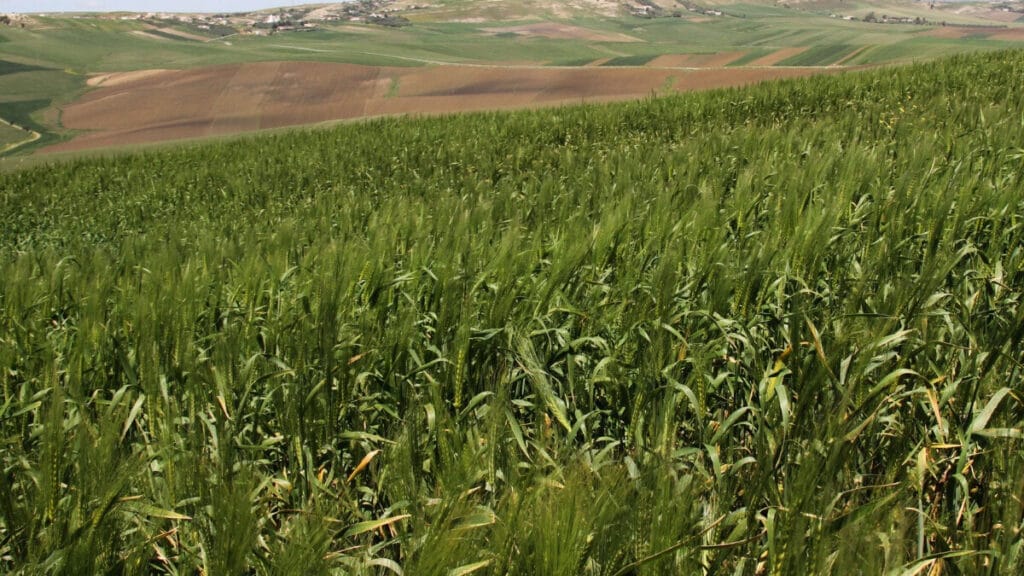Agriculture and food in Morocco, like in the rest of the world, are closely linked to fossil fuels. From nitrogen fertilizers to transportation, irrigation, and processing, every link in the agri-food chain depends on oil or gas. This observation is highlighted by the IPES-Food report Fuel to Fork, which estimates that 15% of global energy consumption is absorbed by the food system, with a significant share attributed to the production of fertilizers derived from natural gas.
Globally, this industrialized, mechanized, and monoculture-oriented agriculture is one of the largest emitters of CO2. The mere use of nitrogen fertilizers is responsible for 2.4% of global emissions, which is as much as commercial air transport. In the face of this paradox – a food system presented as a solution to ecological crises while also driving climate disruption – IPES-Food calls for a transition to agroecology and the relocalization of production.
Morocco in transition, but still far from the goal
In Morocco, the transition has begun but is incomplete. “Agriculture remains dependent on fossil fuels, even if to a lesser degree than in more industrialized countries,” says Lamiae Ghaouti, director of INRA. She emphasizes that the average use of fertilizers in 2022 reached 53.5 kg per hectare, a figure that is misleading as it masks significant regional disparities.
In the face of energy price volatility and geopolitical uncertainties, the structural vulnerabilities of the sector have intensified. The “Green Generation 2020-2030” program aims to change the situation by focusing on the integration of renewable energies, biofertilizers, and adapted crops such as legumes or cacti. Several pilot projects are underway, particularly on the use of enriched compost or biochar, a form of charcoal beneficial to soils.
Conflicting visions
However, not all stakeholders share this optimism. For Rachid Benali, president of COMADER, “nitrogen fertilizers are essential. Replacing them today would be like wanting to farm without water.” He insists on the economic reality: during the price surge of 2022-2023, many farmers simply stopped using them, resulting in a drop in yields.
The same observation is made in the processing sector: Mouneim El Eulj, president of FENAGRI, recalls that energy costs impact the entire chain, from farm to plate. “The price of diesel affects logistics, factories see their costs skyrocket, and food products become less competitive for export.” Yet, a transition dynamic exists: solar, biomass, energy efficiency, recycled packaging… Initiatives are emerging among major groups like Danone, Nestlé, or Lesieur Cristal.
Agroecology: hope or illusion?
INRA advocates a long-term vision, focusing on legumes, direct seeding, or resilient species (argan tree, carob tree, cactus) to reduce dependency. But to scale up, multiple barriers must be overcome: lack of training, conservatism, and a deficit of incentives.
As Lamiae Ghaouti summarizes, “agroecology is not just a simple product replacement. It is a change of system, practices, and sometimes culture.” Pilot areas are emerging (Chaouia, Loukkos, Gharb…), but without solid technical and financial support, solutions will remain marginal.
A difficult equation: produce more with less energy
Agriculture represents 14% of GDP and one-third of jobs in Morocco. In this context, the question is not only ecological but strategic: how to feed the population and maintain agricultural income while reducing dependence on fossil fuels?
Between the caution of COMADER, the determination of INRA, and the emerging efforts of the agri-food sector, one thing is clear: the current model is not sustainable in the long term. A transition is not only possible but essential, provided it is gradual, localized, and supported by resources.
Morocco has the assets to become a laboratory for agroecology in Africa. But it still needs to make the decisive leap from pilot projects to an integrated national strategy.
With Le360


